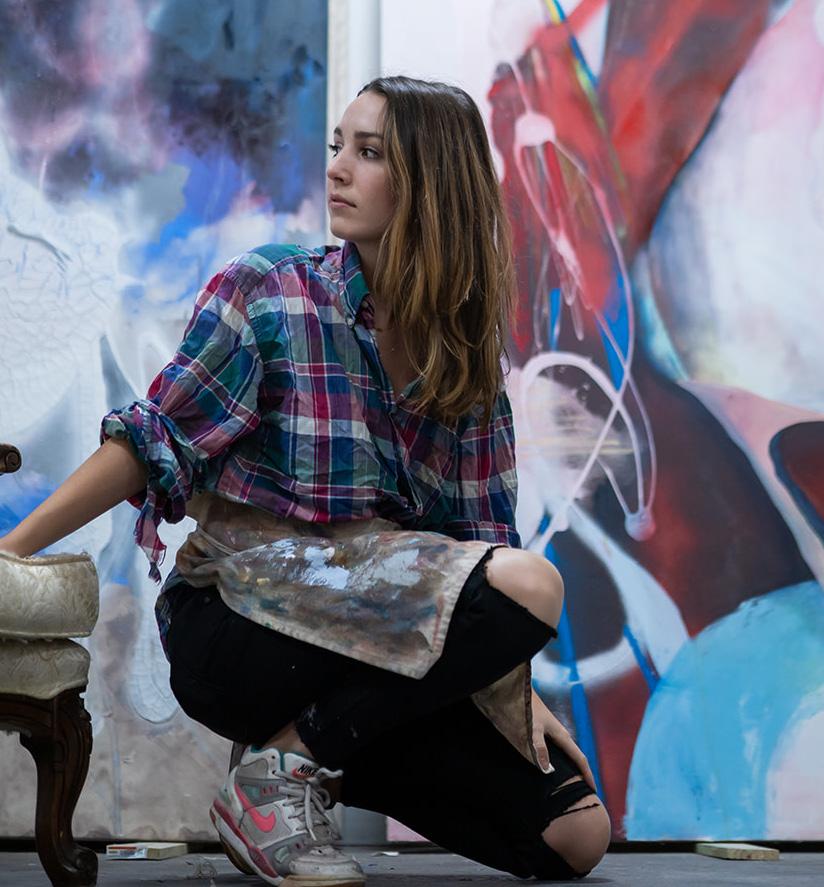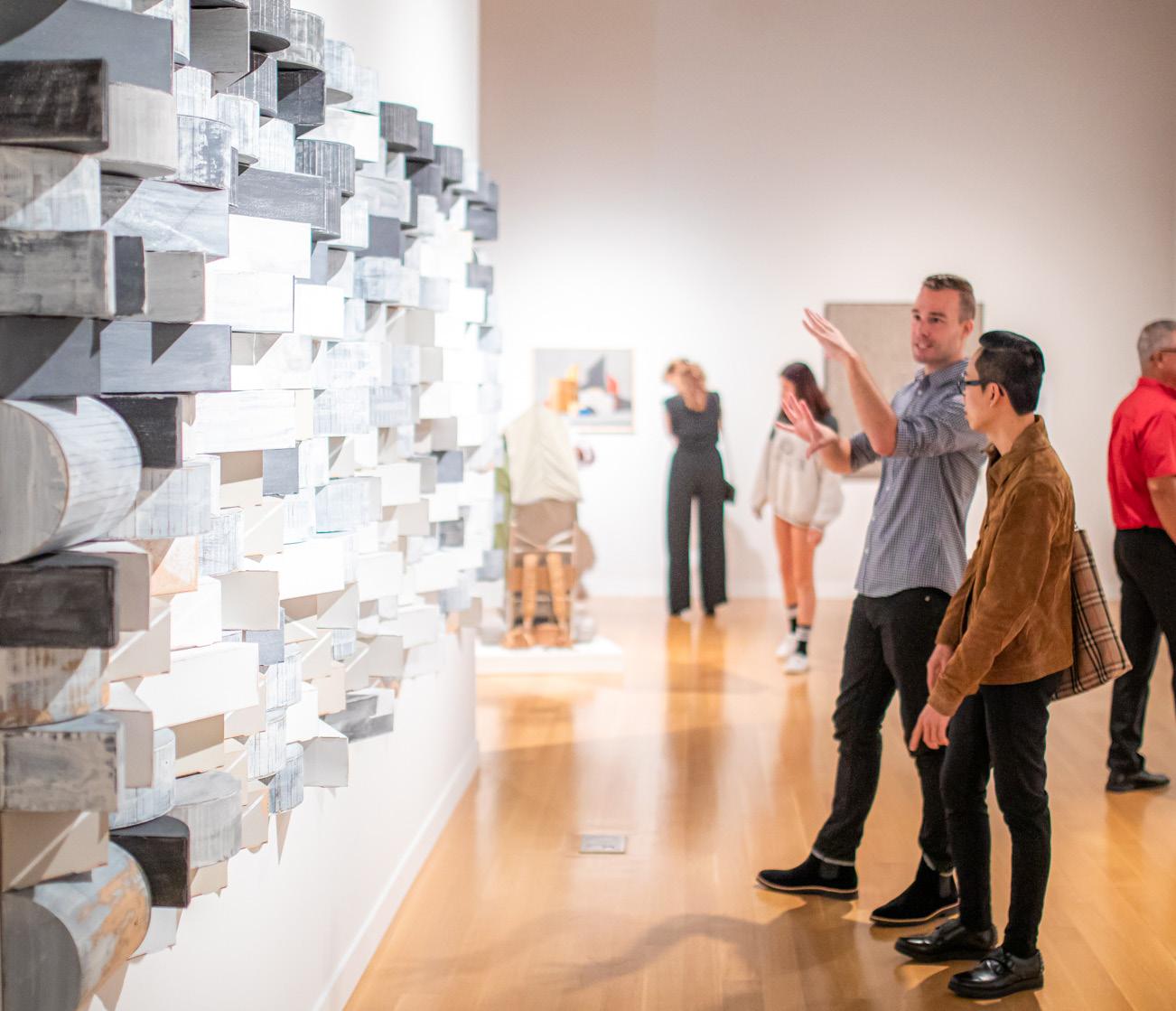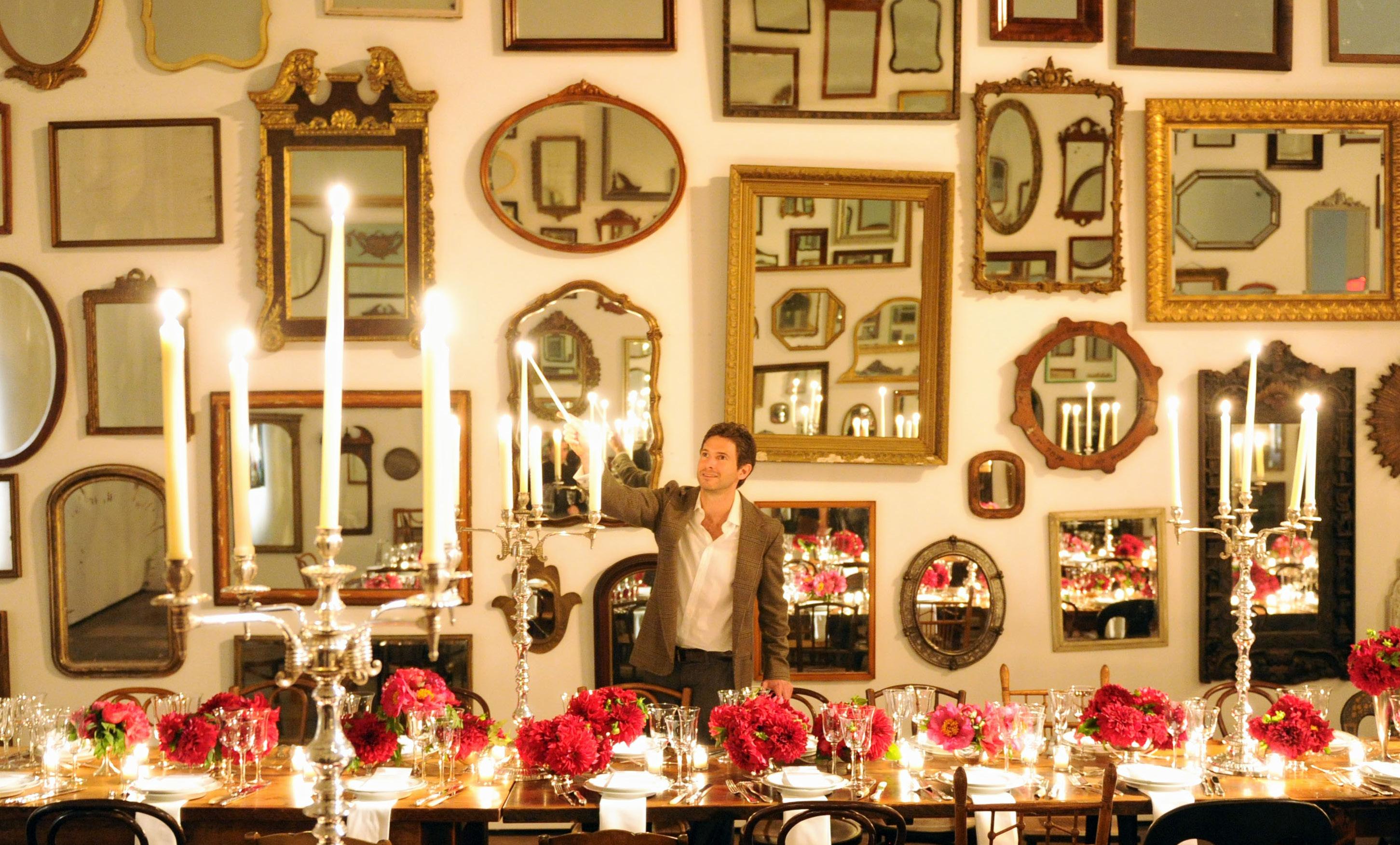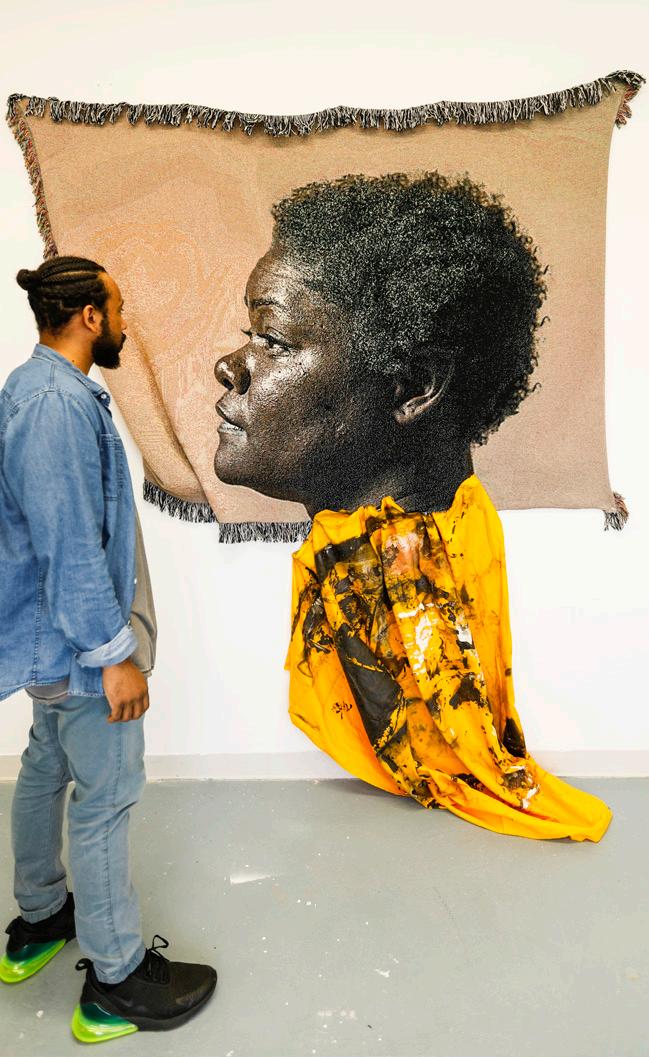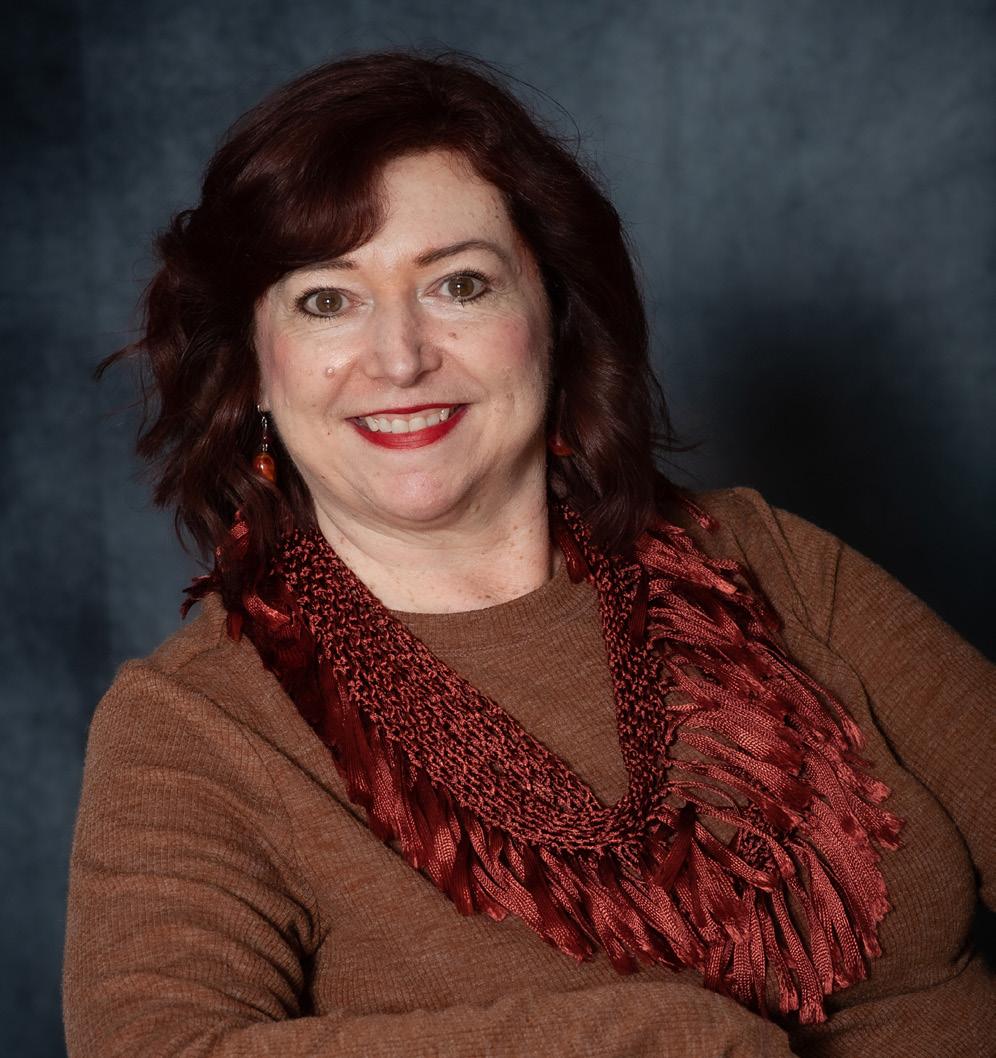
4 minute read
W ALLS
BY JEN SUDUL EDWARDS, PHD, CHIEF CURATOR AND CURATOR OF CONTEMPORARY ART
A look at the upcoming exhibition W|ALLS: Defend, Divide, and the Divine, opening May 13 at Mint Museum Uptown.
Advertisement
On November 9, 2019, the world celebrated the 30th anniversary of the Berlin Wall coming down. Most can easily call up images from that exhilarating evening in 1989: young Germans in T-shirts and jeans destroying the concrete dividers with sledgehammers, armed soldiers looking on with stoic reserve, people rushing through holes and rubble to embrace their counterparts on the other side. The world saw the joy of people uniting, and as the end of the 20th century approached, the toppled wall felt like the dawn of a new age of reason. As the violence of World War II receded into history, it appeared that so, too, was the ancient, simple brutality of dividing people with walls. And yet, the numbers offer a different narrative. When the Berlin Wall came down, there were 15 border walls around the world. As of May 2018, there were more than 77, according to Elisabeth Vallet, a geography professor at University of Quebec-Montreal. Over one-third of the world’s nation states now define their borders with a barrier. And new walls keep going up.
This central issue is at the heart of an exhibition coming to Mint Museum Uptown: W|ALLS: Defend, Divide, and the Divine. I began working on this show two years ago, when Katie Hollander, the director of the Annenberg Space for Photography in Los Angeles, asked me to tell

Raymond Thomspon, Jr., Teen boys playing basketball at the Youth Study Center juvenile detention facility in New Orleans, Louisiana, 2004

Steve Weinik, Healing Begins Through Connection by Swoon and Kensington Heights Community, 2018


Carol Guzy, Albanian refugee camp, March 3, 1999. Credit: Carol Guzy/The Washington Post
the story of the role of walls in human history through a photography exhibition. The result went on view in October 2019 at the Annenberg Space for Photography in Los Angeles, a free exhibition space devoted to photography founded by Wallis Annenberg and the Trustees of the Annenberg Foundation in 2009. I am delighted that the exhibition will open in May at The Mint Museum.
The show, which will run from May 13 to Sept. 6 in the Level 4 gallery space at Mint Museum Uptown, explores various aspects of “walls,” whether they are made of stone, steel, sand, or wire. The space is divided into six sections—Delineation, Defense, Deterrent, The Divine, Decoration, and The Invisible—with each section anchored by a central photo essay. Two of those essays were commissioned for the exhibition by the Annenberg Space for Photography. Magnum photographer Moises Saman documented the Peace Walls in Northern Ireland, while SHAN Wallace photographed Detroit’s Eight-Mile Wall, a painted-over wall that was originally built to segregate a black community from an adjacent white community.
Walls aren’t limited to a particular culture, region, or era. The exhibition feature 130 images spanning six continents and 67 photographers of all stripes: commercial photographers, documentarians, photojournalists, artists, protestors, explorers, and in one case, a Tibetan Buddhist monk. While many of the images in the exhibition connote division, some show unity. Consider the way neighbors converge before the stepwell wall in Jaipur, India, captured in Ami Vitale’s Ripple Effect. Artist Swoon converted a wall into a canvas for a monumental art project that celebrates community at the site of Prevention Point, the groundbreaking addiction treatment center in Philadelphia. And during her work in Detroit, SHAN Wallace found families who chose to embrace the Eight-Mile Wall, rather than be hindered by the history embedded in the bricks and mortar.
Photographers have been shooting walls from the earliest days of photography. In fact, one of the first known photographs is Joseph Nicéphore Niépce’s 1827 heliograph showing the monumental walls outside his window in Le Gras, France. And while walls may be built for one reason, they often stay up for another. The Moroccan city of Essaouira and the Croatian city of Dubrovnik once fortified their ports for protection; today, tourists visit them for their picturesque quaintness. The Western Wall in Jerusalem started as a retaining wall for King Solomon’s Second Temple, but it has become one of the most holy sites for the Jewish people and is considered hallowed by many other religions.
What’s the attraction of walls for photographers? Perhaps it’s that, like photographs, walls are human constructs that describe and circumscribe space. And, like walls, photographs can represent hope or conquest. Both can be admired for their beauty and power, and both can make us feel protected or intimidated.
We constantly contend with walls, whether they are solid, porous, real, or imaginary. This photography exhibition invites you to reflect on the omnipresence of walls and to consider your own. Where do the barriers start in your life? And do you need them to live the life you want?
Some walls featured occur naturally, like the glacier in the Jango Thang plain. Others are constructed with intention, such as Linda Foard Roberts’ aptly titled Divided in Death photograph that captures a low stone graveyard wall, delineating the buried bodies of the enslaved from the whites.

W|ALLS: Defend, Divide, and the Divine Produced and originated at the Annenberg Space for Photography


